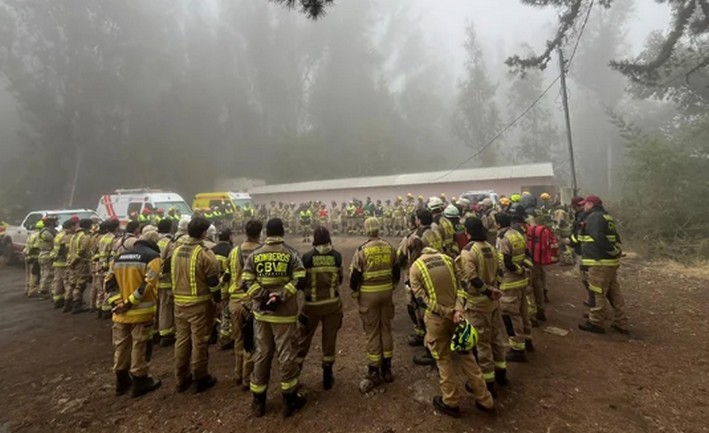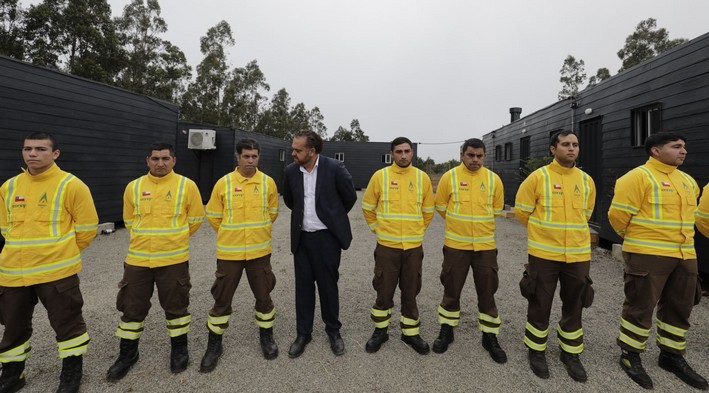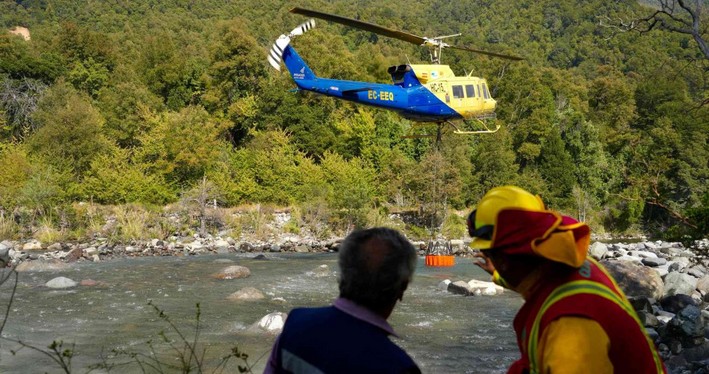Uchile Research Reveals Human Action Accelerates Climate Change Impact on Southern Forests
The study shows how climate change has been cyclical over centennial variability in the last 18,000 years in the forests of the Lakes Region, the area studied.
For over 30 years, Professor Patricio Moreno Moncada, an academic at the Department of Ecological Sciences at the University of Chile, has studied vegetation changes in the south of the country. The latest research he led, “Development of a temperate rainforest zonation on the Pacific slopes of the North Patagonian Andes since ∼18 ka,” revealed divergences in vegetation change trajectories between low and mid-altitude zones of the Andes in the Los Lagos Region.
Although the study reveals "a succession of highly significant climate changes" over the last 18,000 years and we are currently experiencing the centennial phase characterized by warming and reduced rainfall, human action is now added to the latter: "The combination of climate change and human disturbance is exacerbating, accelerating, and amplifying the natural climate change trends."
"The current climate change is part of this centennial variability we have detected in the region starting 5,500 years ago, but there is a difference: now there are many more people and much more technology that can maximize impacts on these systems. Additionally, there is an acceleration of changes, especially during the 20th century. These environmental changes began with European and Chilean settlers in the area since the 17th century—changes that were initially very subtle and localized. But from the late 19th century onward in the Los Lagos Region, we see an intensification of this human effect and detect an acceleration in vegetation changes, primarily through the use of fire," explains the researcher, who is also part of the Center for Climate Science and Resilience (CR2) at the University of Chile.
Cyclical Changes
Patricio Moreno explains that "previous studies already suggested a certain pattern, a certain chronology, a certain rate of change in the landscape, vegetation, and climate," but this particular study "combines a low-altitude site near sea level in the Andes, in the continental Chiloé sector, with a mid-altitude site, 800 meters above sea level."
The study focused on one of the few areas in the country that still has ancient Alerce forests and has not suffered large-scale indiscriminate logging of this tree. Instead, it is the Alerce Andino National Park, a protected area that allows the examination of native vegetation responses and migrations over the last 18,000 years. "We compared a low-altitude site with a mid-altitude site, and the work evaluates the similarities and differences in vegetation composition changes and environmental changes recorded at these two elevations. From this, we identified a temporal structure of environmental and climatic changes that, while common to both, manifest differently in the biota of each elevation."
"From the records we are developing and compiling, we see a continuous history of vegetation development and climate evolution over the last 18,000 years in this area. This zone was covered by Andean glaciers that retreated rapidly at the end of the last glaciation, exposing a series of sectors later colonized by terrestrial vegetation," recounts the academic.
Moreno adds that "approximately 12,000 years ago, the current interglacial period began—one of several anomalously warm and dry phases in this region within the framework of the great glaciations that dominated the last two million years. Around 8,000 years ago, there was a transition toward increased influence from westerly winds, and from 5,500 years ago to the present, strong variability in westerly wind influence began at centennial timescales—centuries or groups of centuries that were warmer and drier versus colder and wetter, an alternation that persists to this day."
Source:Science in Chile

















